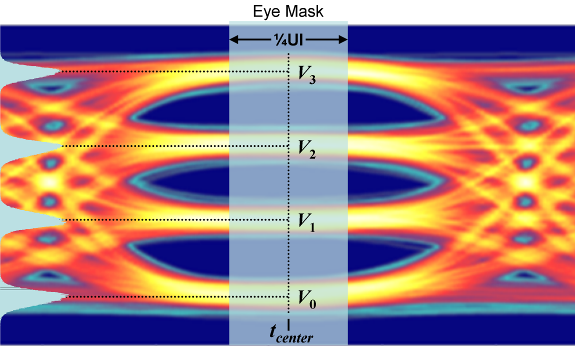In an audio interview, Semtech’s Raza Khan explains why 5G networks use the four-level modulation to transport baseband data, starting at the radio.
After a cellular radio demodulates signals that represent voice and data, the bits become baseband digital data streams. Those bits must travel through telecom networks, data centers, the internet, and the local networks of homes and businesses to reach the user. Until not long ago, serial data streams traveled through wires and fiber optics as simple two-level bits. As speeds increased, a funny thing happened. The signal became distorted to the point where receivers could no longer distinguish a digital one from a digital zero. Bandwidth in electrical signals and dispersion in optical signals took their toll.
Along came signal conditioning and predistortion, which compensated for losses — to a point. Simple modulation was no longer enough.
Enter complex digital modulation. Instead of sending one bit at a time using two amplitudes — called non-return-to zero (NRZ) — networks and the standards that drive them began using two bits per symbol instead of one. Four-level pulse-amplitude modulation (PAM4), which uses four levels with each level representing two bits, provided a way to double the data rate without doubling the symbol (baud) rate. The figure shows an eye diagram of a PAM4 signal. An eye diagram is an overlay of many symbols viewed on an oscilloscope. When you get enough symbols, you get an opening that looks like an eye, assuming the signal has sufficient integrity.
All signals face degradation when traveling over fiber or copper. The degradations are, however, different. In the audio discussion, Raza Khan of Semtech covers how signals degrade in optical transmission as they pass through fiber. He looks at dispersion, the “stretching” of optical signals than can cause symbols to overlap, making the receiver’s job more difficult or even impossible. Dispersion limits a fiber connection’s reach.
Khan also explains the difference in terminology between the electrical and optical community. Simply put, optical links aggregate several electrical links. For example, a 400G (400 Gb/sec) optical link might consist of data from eight 56 Gb/sec electrical links, which comes from eight 28 Gbaud PAM4 signals. The electrical community tends to use data rates such as 28, 56, and 112 Gb/sec, which include framing overhead. The optical community uses numbers such as 25G, 50G, 100G, and so on.
In the interview, Khan also discusses issues with having a four-level symbol as opposed to two levels. For example, the eye diagram in the figure shows a symmetrical middle eye as compared to the upper and lower eyes. That difference has to do with rise and fall arrival times, the time it takes for an edge to cover the different levels.
Because of the three eyes, PAM4 uses a different set of measurements, called TDECQ, than used for NRZ signals. The traditional eye-mask measurements no longer apply.
Listen to the discussion, but keep your eye on a PAM4 signal’s three eyes.





Tell Us What You Think!